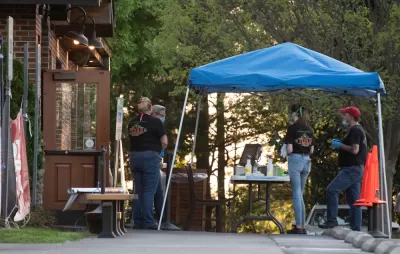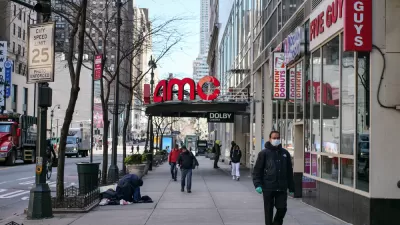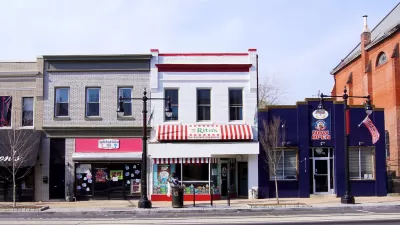Second in a series of conversations about what comes next in local government policies and processes, this time between Geoff Koski and Ben Brown on housing, retail, and broadband

Koski advises to real estate pros, governments, and non-profits on real estate and economic development-related issues. Brown asks a series of pandemic-related questions, starting with:
Ben Brown: There’s no getting around the cloud of uncertainty that will continue to frustrate planning efforts for the next few months. But that doesn’t mean those responsible for making and implementing policies, whether we’re talking leaders in government or business, can get away with doing nothing. Doing nothing is policy by default. So acknowledging all that, what are you encouraging your clients to think about right now?
Geoff Koski: Whether we’re talking about housing or retail or office space, I think the overarching impact of the pandemic and the Great Lockdown is that they will be trend accelerators. The need for innovative affordable housing answers, retail increasingly moving online, the death of distance in the logistics field, the work-from-home shift — all of these things were real and happening at the beginning of 2020. And they’ve only become more apparent and happening faster now.
BB: “Death of distance in the logistics field”? Explain more about that.
GK: We’re growing slower as a population and moving less. We’re having fewer kids. Suburban school districts are telling us that they aren’t seeing the student-to-new-home ratio that they experienced in the past. Remote working has already had effects on intra-national migration for employment, and it seems likely the pandemic and the lockdown experience for both workers and employers will only increase reliance on technology to shrink distances.
The two go on discuss to things city planners should consider within pandemic-driven trends.
FULL STORY: Lessons from the Pandemic: Housing, Retail, Broadband

Study: Maui’s Plan to Convert Vacation Rentals to Long-Term Housing Could Cause Nearly $1 Billion Economic Loss
The plan would reduce visitor accommodation by 25,% resulting in 1,900 jobs lost.

North Texas Transit Leaders Tout Benefits of TOD for Growing Region
At a summit focused on transit-oriented development, policymakers discussed how North Texas’ expanded light rail system can serve as a tool for economic growth.

Why Should We Subsidize Public Transportation?
Many public transit agencies face financial stress due to rising costs, declining fare revenue, and declining subsidies. Transit advocates must provide a strong business case for increasing public transit funding.

How to Make US Trains Faster
Changes to boarding platforms and a switch to electric trains could improve U.S. passenger rail service without the added cost of high-speed rail.

Columbia’s Revitalized ‘Loop’ Is a Hub for Local Entrepreneurs
A focus on small businesses is helping a commercial corridor in Columbia, Missouri thrive.

Invasive Insect Threatens Minnesota’s Ash Forests
The Emerald Ash Borer is a rapidly spreading invasive pest threatening Minnesota’s ash trees, and homeowners are encouraged to plant diverse replacement species, avoid moving ash firewood, and monitor for signs of infestation.
Urban Design for Planners 1: Software Tools
This six-course series explores essential urban design concepts using open source software and equips planners with the tools they need to participate fully in the urban design process.
Planning for Universal Design
Learn the tools for implementing Universal Design in planning regulations.
City of Santa Clarita
Ascent Environmental
Institute for Housing and Urban Development Studies (IHS)
City of Grandview
Harvard GSD Executive Education
Toledo-Lucas County Plan Commissions
Salt Lake City
NYU Wagner Graduate School of Public Service





























